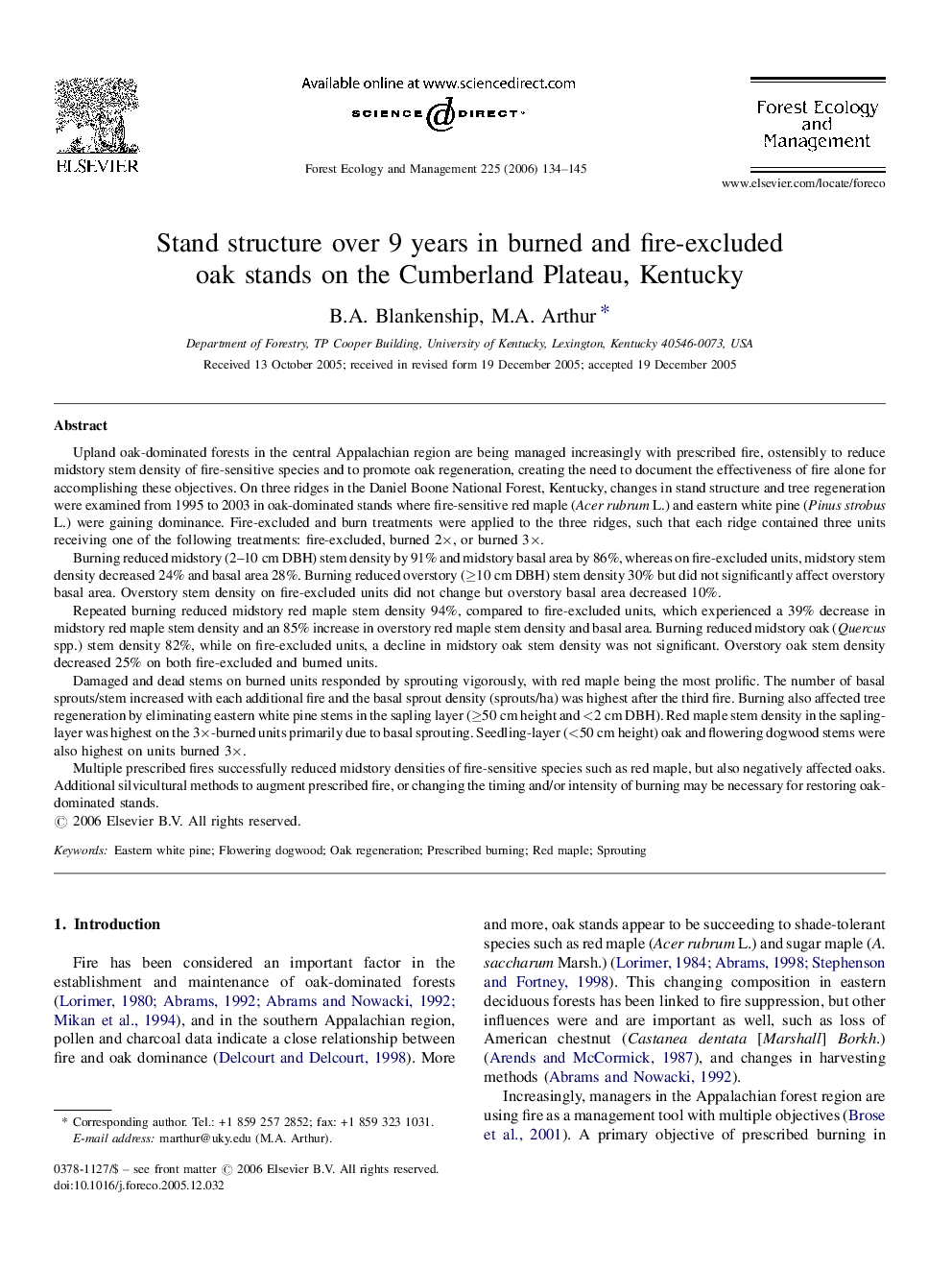| کد مقاله | کد نشریه | سال انتشار | مقاله انگلیسی | نسخه تمام متن |
|---|---|---|---|---|
| 91012 | 159424 | 2006 | 12 صفحه PDF | دانلود رایگان |

Upland oak-dominated forests in the central Appalachian region are being managed increasingly with prescribed fire, ostensibly to reduce midstory stem density of fire-sensitive species and to promote oak regeneration, creating the need to document the effectiveness of fire alone for accomplishing these objectives. On three ridges in the Daniel Boone National Forest, Kentucky, changes in stand structure and tree regeneration were examined from 1995 to 2003 in oak-dominated stands where fire-sensitive red maple (Acer rubrum L.) and eastern white pine (Pinus strobus L.) were gaining dominance. Fire-excluded and burn treatments were applied to the three ridges, such that each ridge contained three units receiving one of the following treatments: fire-excluded, burned 2×, or burned 3×.Burning reduced midstory (2–10 cm DBH) stem density by 91% and midstory basal area by 86%, whereas on fire-excluded units, midstory stem density decreased 24% and basal area 28%. Burning reduced overstory (≥10 cm DBH) stem density 30% but did not significantly affect overstory basal area. Overstory stem density on fire-excluded units did not change but overstory basal area decreased 10%.Repeated burning reduced midstory red maple stem density 94%, compared to fire-excluded units, which experienced a 39% decrease in midstory red maple stem density and an 85% increase in overstory red maple stem density and basal area. Burning reduced midstory oak (Quercus spp.) stem density 82%, while on fire-excluded units, a decline in midstory oak stem density was not significant. Overstory oak stem density decreased 25% on both fire-excluded and burned units.Damaged and dead stems on burned units responded by sprouting vigorously, with red maple being the most prolific. The number of basal sprouts/stem increased with each additional fire and the basal sprout density (sprouts/ha) was highest after the third fire. Burning also affected tree regeneration by eliminating eastern white pine stems in the sapling layer (≥50 cm height and <2 cm DBH). Red maple stem density in the sapling-layer was highest on the 3×-burned units primarily due to basal sprouting. Seedling-layer (<50 cm height) oak and flowering dogwood stems were also highest on units burned 3×.Multiple prescribed fires successfully reduced midstory densities of fire-sensitive species such as red maple, but also negatively affected oaks. Additional silvicultural methods to augment prescribed fire, or changing the timing and/or intensity of burning may be necessary for restoring oak-dominated stands.
Journal: Forest Ecology and Management - Volume 225, Issues 1–3, 15 April 2006, Pages 134–145